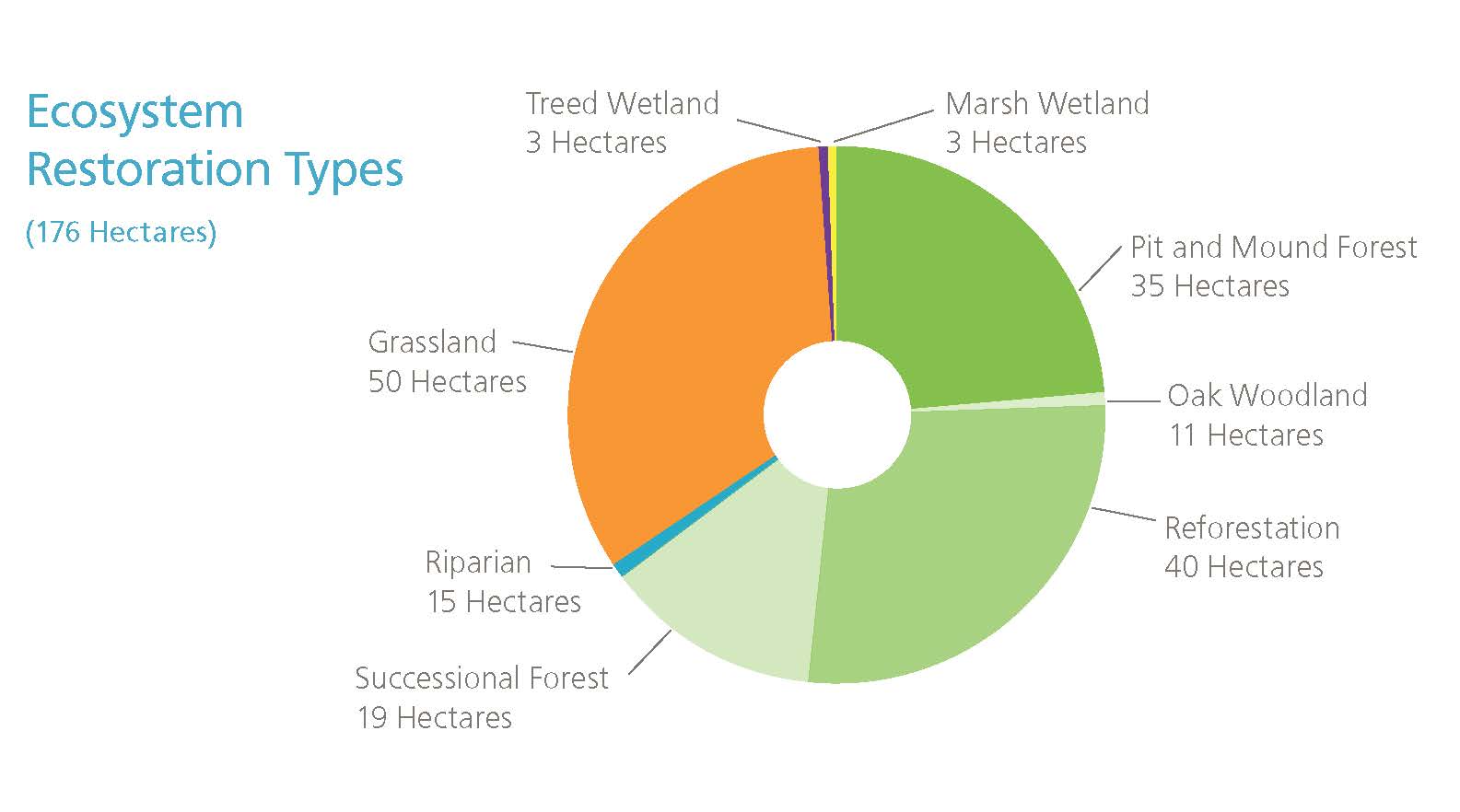Summary
Located in Oakville, as part of the North Oakville Natural Heritage System, Glenorchy Conservation Area is a 400 hectare (990 acre) area owned by Province of Ontario. Conservation Halton is managing the restoration of Glenorchy, as a partnership agreement, due to the unique ecological features, like a deep gorge, forested slopes and shale bluffs surrounding Sixteen Mile Creek, which cuts through the land.

Background
Glenorchy was identified as an area with potential for ecological restoration more than 50 years ago, due to its unique natural features, including part of Sixteen Mile Creek, surrounded by a deep gorge, forested slopes and shale bluffs. Glenorchy was established as a conservation area in 2008, and restoration started the following year. This restoration project forms a key component of the Halton Region and North Oakville Natural Heritage Systems, and are included as part of the Ontario Greenbelt.

Restoration
The objective of the Glenorchy Master Plan is to create 176 hectares (434 acres) of new terrestrial, aquatic and wetland ecosystem. Throughout the project, Conservation Halton has focused on creating a landscape of well-connected natural habitat areas, supporting biodiverse communities of native species and build a stronger, more resilient watershed.
Over the years of work at Glenorchy, Conservation Halton has expanded the forests that were already established, restored a number of swamps and other wetland areas, and created a native grassland in the centre of the area.
The first phase of the restoration at Flamborough Park started with the creation of 0.5 hectares (1.2 acres) of “pit and mound” reforestation. The “pit and mound” approach is used to create the kind of topography that would be found on the floor of an old growth forest, which would take decades to establish on its own. Naturally, this landscape would be created when trees with shallow roots were uprooted during a storm. As a result, the raised mass of roots and soil would become a mound, and then fill with water to form a pit.
Pits and mounds can be found in other forests in North Oakville, but most have been smoothed out by human activity, so Conservation Halton created these natural topographic features in Glenorchy. First, a machine was used to replicate the pits and mound, after which the area was planted with more than 60 native species of trees, shrubs, grasses and wildflowers. Tree nuts, like Red Oak and Shagbark Hickory, were planted directly into the soil to germinate and grow naturally. Also, a diverse mix of native seeds were spread around the area to provide groundcover, which encourages tree growth.
Wetlands are one of the most challenging ecosystems to restore, but compared to any other ecosystem, they provide the highest return on investment for beneficial ecosystem services, like flood management and water purification as well as climate mitigation, adaptation and resilience.
As part of the restoration at Glenorchy, Conservation Halton created a number of small wetlands throughout the area and a large, two-hectare marsh within the grassland to provide habitat for native species and increasing flood storage in the watershed. The amount of wetland area in Ontario has been reduced by more than 85 percent, so the wetland restoration at Glenorchy is an important step to counteracting this loss.
As southern Ontario was settled, much of the prairie or savannah area was removed, and it is estimated that less than 3 percent of these areas remain. This loss has taken place in most parts of North America, and as a result, grassland birds are experiencing some of the worst population decline on the continent, compared to other groups of birds.
A major part of the restoration at Glenorchy was to create a large area of grassland habitat, with a focus on warm season grasses, such as Big Bluestem, Little Bluestem and Indian Grass, as well as wildflowers, such as Milkweeds, Sunflowers and Beardtongues. The restored grassland at Glenorchy will provide habitat for a variety of native species, and contribute to the recovery of grassland and meadow-dependent species, such as Eastern Meadowlark and Savannah Sparrow.
Native grasslands and oak woodlands in our area are fire-dependent, as a result of wildfires and burning by Indigenous peoples, hundreds of years ago. As a result, this grassland will be managed through “prescribed burning.” A prescribed burn is a low-severity fire that is carefully planned, deliberately set and highly controlled, to remove invasive plants and provide the disturbance that many species of grassland plants require for germination and growth. Without prescribed burns, invasive, non-native and other non-desirable plant species would displace the native grassland species that Conservation Halton restored to the area.




The Big Picture
The restoration at Glenorchy is an important piece of the North Oakville Natural Heritage System, which functions as a network of habitat features, such as wetlands, woodlands, grasslands, meadows, creeks and streams, which are connected instead of being fragmented by homes, businesses, and roads. The “natural heritage systems” approach is considered the best way for biodiverse ecosystems to survive and thrive.
Glenorchy being a restored, connected part of this natural heritage system means that the area will be stronger, more resilient and better able to provide valuable services to the community. As a result of the high value of flood control, water filtration, waste treatment and other services, it is estimated that the restoration areas at Glenorchy will provide $816,000 worth of ecosystem services each year.
 Hydro One, Conservation Halton and the Métis Nation of Ontario (MNO) have worked together to improve the Glenorchy Conservation Area through a habitat enhancement partnership project. Traditional Métis values and knowledge were integrated into the pit and mound forest restoration area through planting of traditional plants used for ceremonial and medicinal purposes.
Hydro One, Conservation Halton and the Métis Nation of Ontario (MNO) have worked together to improve the Glenorchy Conservation Area through a habitat enhancement partnership project. Traditional Métis values and knowledge were integrated into the pit and mound forest restoration area through planting of traditional plants used for ceremonial and medicinal purposes.

This project was completed with funding and support from the following:



